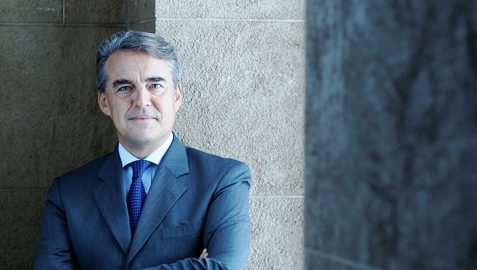The global aviation industry’s problem is clear. Infrastructure is not being built fast enough.
As demand grows in many key places, the lack of supply is causing significant challenges.
"All the optimism supporting strong aircraft orders will mean nothing if we don"™t have the capability to manage traffic in the air and at airports," Alexandre de Juniac, director general and CEO of The International Air Transport Association (IATA) said during a keynote speech at the Singapore Airshow Aviation Leadership Summit Monday.
IATA, an organization that represents more than 275 airlines comprising of 83 percent of global air traffic, is calling for urgent attention to address the challenges in order to secure the industry’s future.
In addition, there are many worrying industry trends that are increasing costs.
"One of these is airport privatizations. We have not found the correct regulatory framework to balance the interests of the investors to turn a profit, with the public interest for the airports to be a catalyst for economic growth," said de Juniac.
The lack of airport capacity in such places as Jakarta, Bangkok, and Manila is another one of de Juniac’s most pressing concerns in the Asia-Pacific region.
Seoul"™s Incheon airport meanwhile, provides an example that other airports might want to follow, the IATA leader noted.
The South Korean airport recently added a runway and terminal capacity without raising charges for airlines and passengers. In addition, Incheon has extended an airport charges discount introduced two years ago.
De Juniac said Incheon airport’s development model demonstrates a great understanding of the role aviation plays in linking the Korean economy to economic opportunities globally.
The comments come on the heels of an announcement that new fees may be imposed on travelers at Singapore’s Changi airport in order to help pay for construction of the new Terminal 5. The Straits Times reported passengers flying out of the airport may pay $10-$15 extra as part of a new tax being considered to help pay for the expansion.
«The Singapore government is also showing great foresight with its expansion plans for Changi Airport, including Terminal 5. But there are challenges,» said de Juniac. «We must ensure the plans for T5 are robust enough to meet the high standards of airline operations and passenger convenience users of Changi Airport have come to expect. And we need to get the funding model right to avoid burdening the industry with extra costs. The prize to keep in sight is the airport’s contribution to Singapore’s overall economy.»
At a media roundtable part of the Singapore Airshow, de Juniac stressed the organization is strongly against any pre-financing of infrastructure.
Ensuring sufficient and cost-efficient infrastructure in Asia-Pacific is a top priority, according to IATA.
The region is center stage of the industry’s overall growth. By 2036, IATA expects 7.8 billion people to travel globally, up from 4.3 billion expected in 2018.
Of the 3.5 billion trips to, from or within the Asia-Pacific region in 2036, 1.5 billion will touch on China. As early as 2022, China will be the largest single aviation market. India is another emerging power-house, though it will likely take longer to mature, according to IATA.
De Juniac also identified five fundamental areas that need to be protected when reimagining the industry’s future:
Safety
«We had a stellar year in 2017. But there are always ways to improve"”particularly as our data analysis capabilities grow. I would like to imagine a future for aviation with no accidents. We need to improve on safety, particularly as our data analysis capabilities grow,» said de Juniac…



